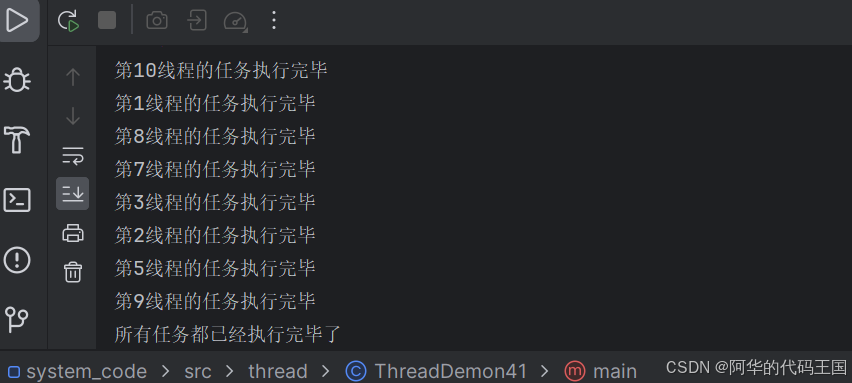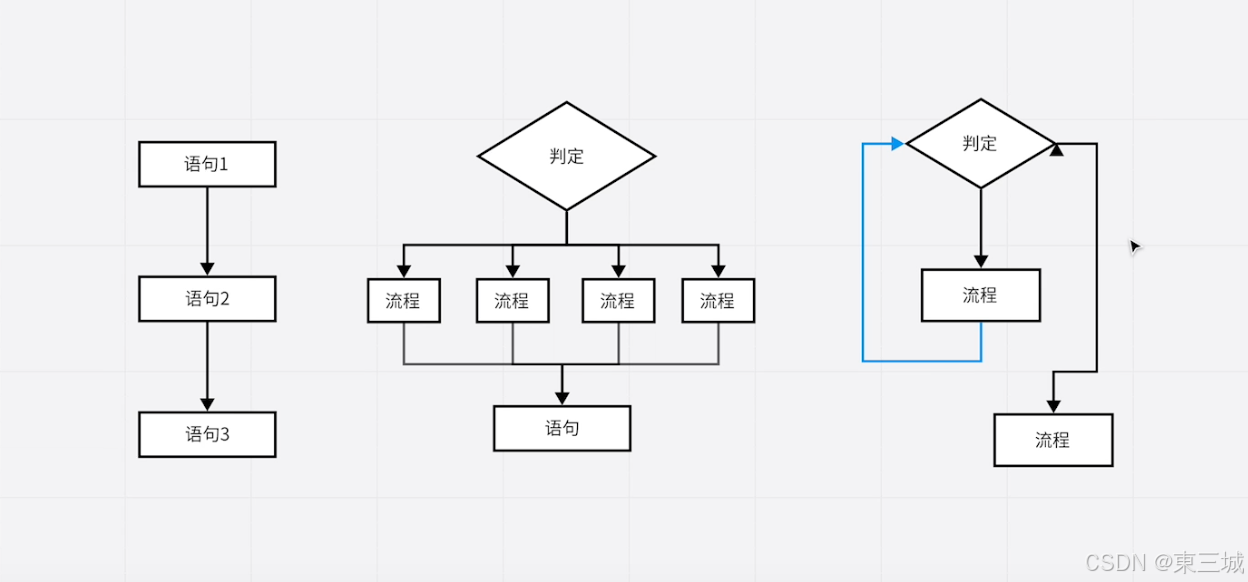认识注解
注解(Annotation)是一种用于为代码添加元数据的机制。这些元数据可以在运行时被访问,用于为代码元素(如类、方法、字段等)提供额外的信息或指示。
由于Python中装饰器只能装饰类和方法,因此也只能为此二者提供额外的信息。
整体思路
通过Python中的装饰器实现注解功能,需要注意的是,此设计的缺陷在于只能装饰类和方法。
在Python中@语法糖,等价立即调用,参数为装饰的目标类或者函数:
class Annotation:pass@Annotation
等价
Annotation()
由于Python作为动态语言,不涉及编译时期,我们去掉注解的声明周期,只提供作用范围,即作用在类上或者方法上,通过枚举类ElementType规范。
而对应的元注解为Target,即注解的注解,在Python中应该为装饰类装饰器的装饰器(有点绕)。
因为需要修改注解的原本行为,因此元注解的设计较为核心,当前阶段只涉及Target一个元注解,该注解应该具备如下功能:
- 接受一个ElementType作为参数,用于判断注解应该作用在类上还是函数上,或者皆可。
- 因为元注解的装饰对象一定是注解类(即类装饰器),因此元注解的目标对象为class类;所有注解类都应该默认实现Annotation接口。
- 由于Python中不具备Class类,即已知class A我们无法获取类A上是否存在注解,比如@AriaFor,因此元注解应该获取目标类A添加属性
__annotation_list__用于存储注解实例对象,方便通过类A获取元信息。
设计
1. 基类Annotation
参考Java注解概念,此接口默认为注解的超类,所有注解都属于Annotation。
class Annotation: @abstractmethod def annotationType(self) -> 'Annotation': raise NotImplementedError
2. 枚举类ElementType
此枚举类用于规范注解的作用范围,声明@Target时候必须指明作用范围,即@Target(ElementType.Type)。
class ElementType(Enum): class Type: def __init__(self, name, value, label): self.name = name self.value = value self.label = label TYPE = Type('type', type, '类') METHOD = Type('method', types.FunctionType, '函数')
Q:为什么枚举类内部还需要封装一个Type类?
这是因为当我们进行类型检查的时候,我们需要判断装饰的目标对象是函数还是类,如果不是规定的类型,则应该抛出异常,而此类型则为Type.value。
3. 参数类型校验装饰器@accepts
此为函数装饰器,用于校验函数的入参是否符合规范,这里用来检查ElementType。
def accepts(*types): def check_accepts(f): def wrapper(*args, **kwargs): if not all(isinstance(arg, types) for arg in args[1:]): raise TypeError("Argument %s is not of type %s" % (args, types)) return f(*args, **kwargs) return wrapper return check_accepts
Note:此装饰器并不通用,原因是对args[1:]进行了截断,也就是通常针对类方法(self,*args)这种,因为我们不需要校验第一个参数self。
4. (核心)元注解@Target
此注解本质为类装饰器,作为注解的元注解,他需要改变注解的一些基本行为,主要包括三个方法的重写:__init__、__new__、__call__。
元注解只能作用在注解上,并且必须指明参数ElementType,否则无法正常工作。
4.1 源码
class Target: @accepts(list, tuple, ElementType) def __init__(self, elementTypes: Union[List[ElementType], ElementType]): # 1. 检查列表或者元组类型是否正确 if isinstance(elementTypes, list) or isinstance(elementTypes, tuple): for e in elementTypes: if not isinstance(e, ElementType): raise TypeError(f"@Target只能声明作用范围为ElementType,当前{type(e)}为不支持的类型。") # 2. 元组和ElementType需要转化为list列表形式 if isinstance(elementTypes, ElementType): elementTypes = [elementTypes] self.elementTypes = [e.value for e in elementTypes] def __call__(self, cls): class AnnoProxy(cls, Annotation): def annotationType(self): return cls def __init__(self, *args, **kwargs): if len(args) > 1: raise TypeError( f"@{self.__class__.__name__}只能接受一个args参数作为默认value,存在多个参数请使用字典。") if len(args) == 1: self.value = args[0] if len(args) > 0 else kwargs.get('value') super().__init__(*args, **kwargs) def __new__(_cls, *args, **kwargs): _instance = super(AnnoProxy, _cls).__new__(_cls) _instance.source = cls _instance.elementTypes = self.elementTypes if len(kwargs) == 0 and len(args) == 1 and (isinstance(args[0], type) or isinstance(args[0], types.FunctionType)): return AnnoProxy.wrapper_target(_instance, args[0]) else: # 其他情况则为 @AriaFor(123)或者@AriaFor(name="Tom")这种带参数的形式调用。 _instance.elementTypes = self.elementTypes return _instance def __call__(self, target): # 如果调用了__call__方法说明目标注解类的使用形式为带参数的类装饰器,即@AriaFor(123)这种 # 此时 target 就是装饰对象,类或者函数 return AnnoProxy.wrapper_target(self, target) @staticmethod def wrapper_target(_instance, target): support_types = [e.value for e in _instance.elementTypes] labels = [e.label for e in _instance.elementTypes] if not any(isinstance(target, s_type) for s_type in support_types): raise TypeError( f"@{_instance.source.__name__}无法装饰[{type(target).__name__}][{target.__name__}],此注解只能作用在[{'和'.join(labels)}]上") target.__annotation_list__.append(_instance) if hasattr(target, '__annotation_list__') else setattr(target, '__annotation_list__', [_instance]) return target return AnnoProxy
4.2 说明
作为元注解,他的装饰对象是已知固定的,即注解类;并且一定是带参数的类装饰器,因此定义时候__init__方法接受固定类型参数ElementType。
当使用元注解装饰一个注解的时候,如下:
@Target(ElementType.Type)
class AliaFor:pass
应该固定返回一个代理类,即注解的代理类,该类的父类为目标类AliasFor,以及基类Annotation,因此__call__方法的返回值为注解的代理类,即AnnoProxy。
通过此代理类,我们修改注解的基本行为,主要通过定义:__init__、__new__和__call__方法。
由于我们在使用注解的时候存在两种情况,这两种情况在类装饰器中的表现完全不同,因此必须分开讨论:
使用方式一:
@AliasFor
class A:pass
使用方式二:
@AliasFor(123)
class A:pass# 或者@AliasFor(name="Tom")
class A:pass
方式一是不带参数的类装饰器,此方法执行目标类A作为参数传递的时候作为__new__方法的参数传入。
方式二则是带参数的类装饰器,此方法执行目标类A讲作为参数传递的时候作为__call__方法的参数传入。
效果展示
当我们定义注解的时候,我们只需要通过元注解@Target并且指定作用范围即可,可以是单个ElementType,也可以同时支持类和函数。
当携带参数时,即注解的属性值,如果属性值只有一个,并且名称为value,可以省略不写。
1. 不带参数的使用
声明一个注解:
@Target(ElementType.TYPE)
class AliaFor: pass
使用注解:
@AliaFor
class A: passif __name__ == '__main__': # 获取类A上的注解信息 for a in A.__annotation_list__: # 查看注解实例 print(a) # 查看注解的类型 print(a.annotationType()) # 查看注解是否为Annotation的实例对象 print(isinstance(a, Annotation))
输出:

可以看到,返回的是一个代理类对象,即AnnoProxy,且属于Annotation类。
2. 带参数的使用
2.1 只有一个参数,且参数名称为value
声明一个注解:
@Target(ElementType.TYPE)
class AliaFor: def __init__(self, value): self.value = value
使用注解:
@AliaFor(123)
class A: passif __name__ == '__main__': # 获取类A上的注解信息 for a in A.__annotation_list__: # 查看注解实例 print(a) # 查看注解的类型 print(a.annotationType()) # 查看注解是否为Annotation的实例对象 print(isinstance(a, Annotation)) # 查看注解的属性值 print(a.value)
输出:

2.2 注解属性值
声明一个注解:
@Target(ElementType.TYPE)
class AliaFor: def __init__(self, name, age): self.name = name self.age = age
使用注解:
@AliaFor(name="Tom", age=18)
class A: passif __name__ == '__main__': # 获取类A上的注解信息 for a in A.__annotation_list__: # 查看注解实例 print(a) # 查看注解的类型 print(a.annotationType()) # 查看注解是否为Annotation的实例对象 print(isinstance(a, Annotation)) # 查看注解的属性值 print(a.name) print(a.age)
输出:

3. 错误作用范围异常
声明注解作用在类上:
@Target(ElementType.TYPE)
class AliaFor: pass
错误的使用:
class A: @AliaFor def add(self): pass
输出:

4. 使用工具类
class AnnotationUtils: @staticmethod def getAnnotations(source: type) -> Union[List[Annotation], None]: return source.__annotation_list__ if hasattr(source, '__annotation_list__') else None @staticmethod def getAnnotation(source: type, annotation_type: type) -> Union[Annotation, None]: if AnnotationUtils.getAnnotations(source) is None: return None return next((a for a in AnnotationUtils.getAnnotations(source) if isinstance(a, annotation_type)), None) @staticmethod def isAnnotationPresent(source: type, annotation_type: type): return AnnotationUtils.getAnnotation(source, annotation_type) is not None @staticmethod def getAnnotationAttributes(annotation: Annotation) -> dict: return {k: v for k, v in annotation.__dict__.items() if not k.startswith('_')} @staticmethod def getAnnotationAttribute(annotation: Annotation, attribute_name: str): return AnnotationUtils.getAnnotationAttributes(annotation).get(attribute_name, None)
声明一个注解:
@Target([ElementType.TYPE, ElementType.METHOD])
class AliaFor: def __init__(self, name, age): self.name = name self.age = age
使用注解:
@AliaFor(name="Tom", age=18)
class A: @AliaFor def add(self): passif __name__ == '__main__': print(AnnotationUtils.getAnnotations(A)) print(AnnotationUtils.getAnnotation(A, AliaFor)) print(AnnotationUtils.isAnnotationPresent(A, AliaFor)) print(AnnotationUtils.getAnnotationAttributes(AnnotationUtils.getAnnotation(A, AliaFor))) print(AnnotationUtils.getAnnotationAttribute(AnnotationUtils.getAnnotation(A, AliaFor), 'name'))
输出:

🔗参考链接
[1]:官方文档函数装饰器 PEP 318
[2]:官方文档类装饰器 PEP 3129
[3]:博客 # # Python笔记 - 函数、方法和类装饰器



















